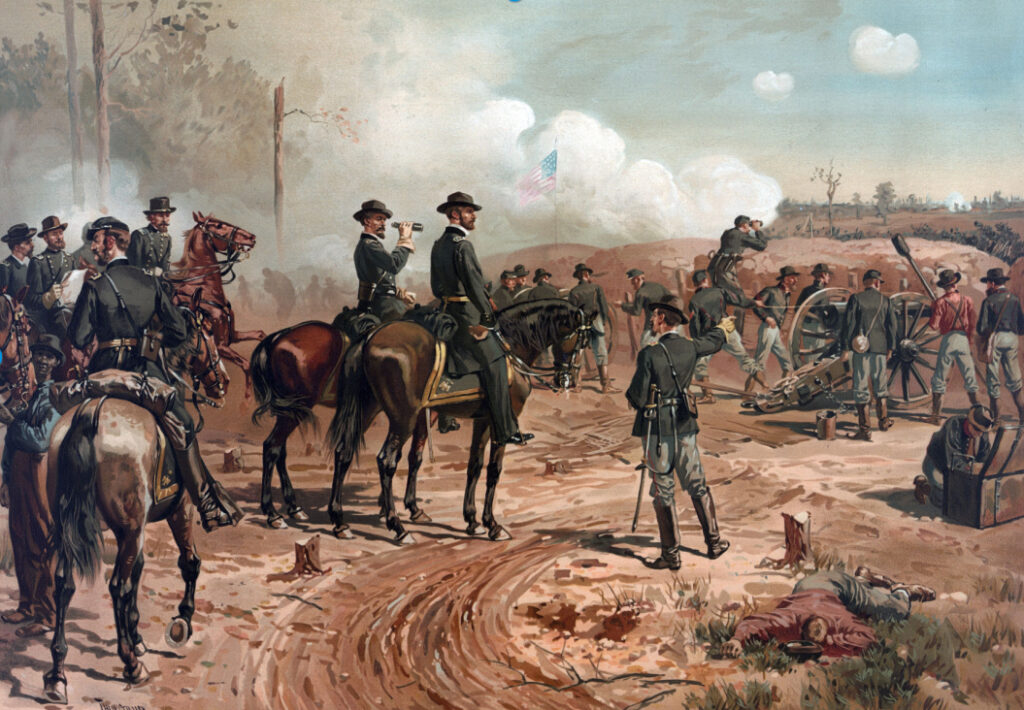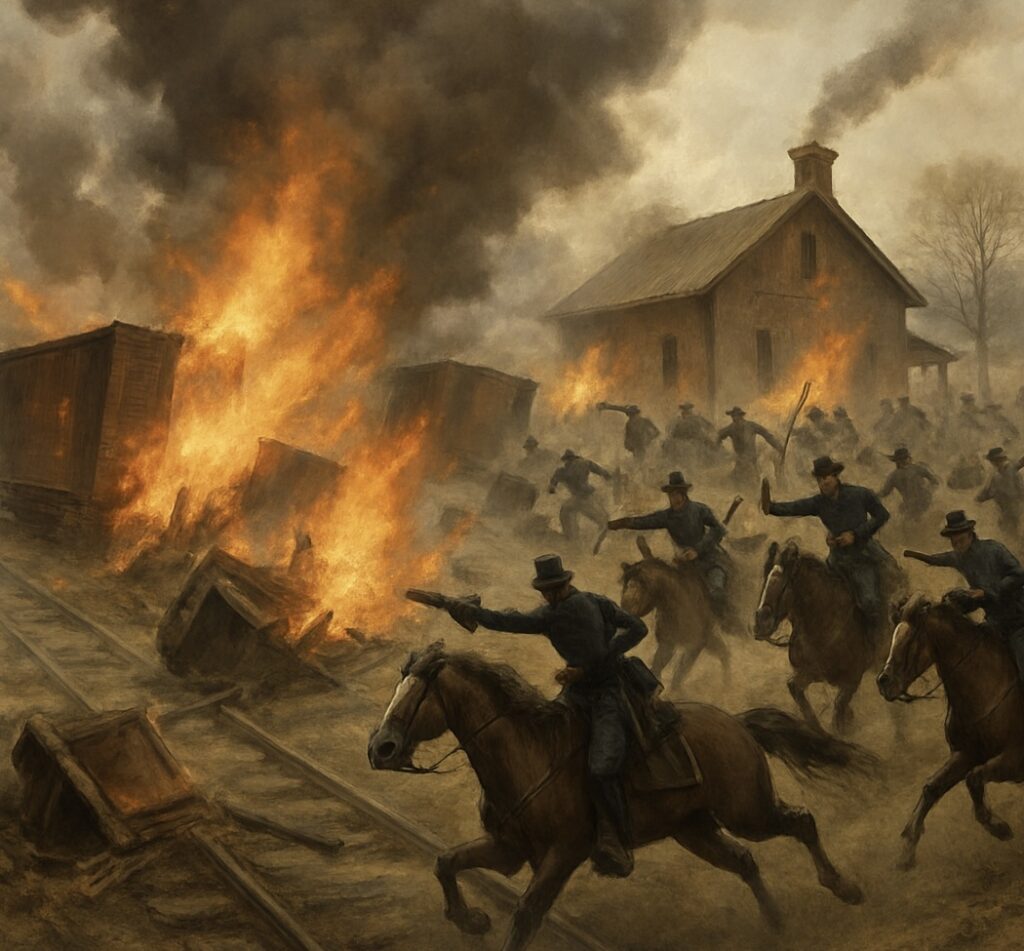I hadn’t intended to start this blog series, at least, not right now. With a semester completed and just one class left before I complete my master’s degree, I should be focusing on projects I’ve already begun. There are themes I’ve wanted to explore and drafts waiting to be refined. But I’ve recently come to realize that none of that can truly move forward—not the work I’ve started, and certainly not the ideas I want to pursue most about—until I confront something I’ve long believed deserves more attention.
I was in the United States Army for twenty years, technically at the time of writing this I am still a member of the Armed forces. I realized that the end of my career was near when a new post commander at unnamed Army installation took over and suddenly steep hills were closely mowed. I am no stranger to the military emphasis on lawn care. I’m pretty sure most trainings I completed in the first decade of my career would have been cut in half if the hour upon hours spent completing lawn care was removed. But this wasn’t just about landscaping. This particular Army post keeps the past alive, literally, through its mounted cavalry demonstrations. Soldiers ride in formation wearing period attire, reenacting the spirit of the frontier Army. It’s not just a tribute to military tradition, but a reflection of how the institution chooses to remember itself: proud, orderly, victorious, and far removed from the violence those symbols once enforced. Upon years of reflection, I believe the historian in me understands that this partial image of military discipline and tradition represented by Indian Wars mounted cavalry is a curated memory. To understand this constructed image, we must examine the relationship between the Civil War and the Indian Wars.

The Rebellion’s Final Days
Confederate forces had been defeated; its leaders just hadn’t admitted it yet. Major General William Tecumseh Sherman, with his 60,000-strong Army of the Carolinas and carrying forward 68 artillery pieces[1], was en route to unite with General Ulysses S. Grant’s Army of the Potomac. Just seven months earlier, Sherman had captured Atlanta and launched a campaign of devastation across Georgia during his infamous March to the Sea—a level of destruction unprecedented in U.S. history.
The Army of the Carolinas had already secured the Southern theater in practice. Sherman believed in bringing the desolation once reserved for battlefields to the civilian infrastructure that sustained the Confederate war effort. In February 1865, his army moved into South Carolina, a state widely blamed for starting the war. Its capital, Columbia, was marked for symbolic punishment. Although Sherman claimed to distinguish between private property and public buildings, over half the city lay in ruins when his troops departed.
Glory would not be reserved for Sherman’s forces alone. In Virginia, Grant’s protégé, Major General Philip Sheridan, pressed for a final blow. General Robert E. Lee’s Army of Northern Virginia remained entrenched near Richmond and the vital rail hub of Petersburg, its collapse would bring about the true end of the Confederacy. After ten months of siege, Lee’s lines finally began to break.
On April 1, 1865, Sheridan, in conjunction with Major General Gouverneur K. Warren and his V Corps, secured a pivotal Union victory at Five Forks. Yet only Sheridan received recognition. Warren, relieved of command by Sheridan on the field, would spend the rest of his life contesting what he saw as a grievous injustice. The following morning, Union forces shattered the Petersburg defenses. That night, Lee’s army began its retreat westward, hoping to join forces with General Joseph E. Johnston, who remained engaged with Sherman’s army in North Carolina.
As Lee’s army pushed toward Lynchburg’s rail lines, the dream of resistance faded. Exhaustion and disillusionment thinned the ranks. Many Confederate soldiers, especially native Virginians, refused to abandon their home soil to continue a lost cause further south. Men slipped from the ranks, their service to the Army of Northern Virginia quietly concluded. With waterlogged boots, sparse rations, and no clear path forward, those remaining marched west.
On April 6, they collided with Sheridan’s cavalry at Sailor’s Creek, a brutal engagement that ended in disaster. Nearly 9,000 Confederates were killed, wounded, or captured: seven-eighths of the total casualties. It was a catastrophic blow from which Lee’s army would never recover.[2] Though Grant extended an invitation to meet for terms, Lee pressed onward—fewer in number, fewer in options, and with surrender just days away.

The Road to Appomattox: Where the Confederacy Fell
Among Sheridan’s most aggressive subordinates was Brigadier General George Armstrong Custer. (At the time of Lee’s surrender, Custer still held the rank of brigadier general; his brevet promotion to major general would not come until April 15.) At Five Forks and in the days that followed, Custer’s cavalry relentlessly harassed the Confederate rear, capturing supplies, artillery, and prisoners. On April 8, Custer’s men struck Appomattox Station, destroyed sections of track, and seized 25 artillery pieces, a hospital train, and four train cars loaded with critical supplies, effectively cutting off Lee’s final hope of resupply or escape.[3] The next day, on 9 April 1865, General Lee formally surrendered. The defeated Army of Northern Virginia was left under the charge of Union officers, including Major General Gibbon of the Army of the Potomac, until its men—members of an armed force that had lived rent-free in the nation’s mind for four long years—could be paroled. Grant turned his attention south, where General Sherman would soon accept the final surrender from Johnston.
The Confederacy was defeated; at last, the Union was made whole. Confederate soldiers returned to a homeland that had borne the physical brunt of the nation’s trauma, its fields scorched, its cities shattered. The Union, victorious, had preserved its territory and identity, its civilian populations remained largely unscathed by war’s direct touch.
The Confederacy ceased to exist on April 9, 1865, but the Union, in spirit, followed swiftly, its moral and symbolic center torn apart by the assassination of President Abraham Lincoln less than a week later. In truth, the nation that had existed before April 1861 was already gone, replaced by something altered, modernized by industrial war, hardened by suffering, and redefined by the costs of survival.

The End of Two Nations and the Transition to New Frontiers
“The real war will never get in the books.” — Walt Whitman, Specimen Days (1882)[4]
Despite it all, the nation insisted on reunification. A victorious civilian population, largely insulated from the war’s savagery, demanded reconciliation. A new national narrative quickly emerged, one that emphasized reunion and forgiveness, even allowing for the national acceptance of the Lost Cause mythology that softened Confederate guilt and reimagined the war’s cause.
Many never returned home. Many returned missing limbs. And many more discovered that the dream of home they had clung to amid the carnage no longer existed—if it ever truly had. For the sake of the nation, society moved forward, embracing reunification and the idea of former enemies as “brothers.” But this came at a cost: the emotional and psychological wounds of the war were buried, not healed. Though the abolition of slavery gave the Union cause a tangible victory—something to justify the deaths and mutilations of tens of thousands, the deeper gangrenous wound of racism, dislocation, and resentment remained.
The former Confederacy focused its bitterness on federal reconstruction and political occupation. The Union, meanwhile, redirected its postwar energy westward, where a new enemy could absorb its disillusionment—a people who could be resented, displaced, and dominated: the Native nations of the American frontier.
[1] Sherman, William Tecumseh. “Memoirs of General William T. Sherman, by Himself.” Internet Archive, January 1, 1957. https://archive.org/details/memoirsofgeneral00ilsher/page/268/mode/2up
[2] “Battle Detail: Sailor’s Creek.” National Parks Service. Accessed May 30, 2025. https://www.nps.gov/civilwar/search-battles-detail.htm?battleCode=va093.
[3] Davis, George B., Leslie J. Perry, and Joseph W. Kirkley. The War of the Rebellion: A compilation of the official records of the Union and Confederate Armies. Vol. 1 of 46. Washington: Government Printing Office, 1894. 56-57.
[4] Walt Whitman, Specimen Days & Collect (Philadelphia: David McKay, 1882–83), 82, https://archive.org/details/specimendayscol00whitgoog/page/n82.
Leave a Reply